Getting something half right is the worst.
All wrong can be scrapped without remorse. All wrong can be hilarious and thought-provoking, as the Ugly Necklace Contest proves. And all right almost never happens, at least not in my experience.
Half right is like beading purgatory.
Half right is what happened to me when I first tried to combine: 1.the Scheherezade Pendant from Sabine Lippert's Beaded Fantasies, and 2. Cynthia Poh's Netted Necklace from the August 2011 Bead & Button. I wanted something that combined extravagance with repetition, and both patterns featured pearls in a way I thought could play nicely with each other. I had a lot of pale lavender pearls that matched the finish on some green fire-polished rounds, and green seed beads to match. The theory was solid, but in practice ...
In practice, what I got was the unholy offspring of a cactus and an octopus, in jewelry form. So I call it the Cactopus Necklace, and I take it down from the wall every now and again to goggle at it and wonder what went wrong.
In retrospect, the most astonishing thing is that I finished the whole piece, when it should have been clear from the start that the colors, so pretty on their own, went completely muddy when placed side-by-side. It is one of the great mysteries of beadwork that two perfectly lovely and well-behaved types of beads can turn on each other in the aesthetic equivalent of a bare-knuckle brawl. Or a bad blind date, where the green fire-polished beads keep checking their phone out of boredom and the lavender pearls offer to split the bill because they already know there's precisely zero chance the two of them will end up in bed together at the end of the night.
Some beads just have no chemistry. Don't let that photo on the left fool you: in the real world this necklace is so dull it dries your eyeballs out just to look at it.
But the construction was satisfyingly tactile and such a joy to make that I've always been tempted to try again. Clearly the essential problem here was color -- I needed something vibrant, a palette with more contrast.
I found an answer in the thought of a rose window.
Confession: I was raised Catholic, so the fall of light through stained glass has a lot of emotional and aesthetic resonance for me. One of my very favorite memories is standing in the pool of sunlight from the rose window in Nôtre Dame de Paris, watching the colors slide and shift across my own skin. This image seemed like an appealingly celestial solution to my desert-ocean hybrid problem: ditch the octopus, shun the cactus, and aim for something higher.
I've got a pretty deep stash of discounted and discontinued Swarovski crystal -- thanks, Fusion Beads sale bins! -- so I grabbed the necessary sizes, some light silvery seed beads, and went to town.
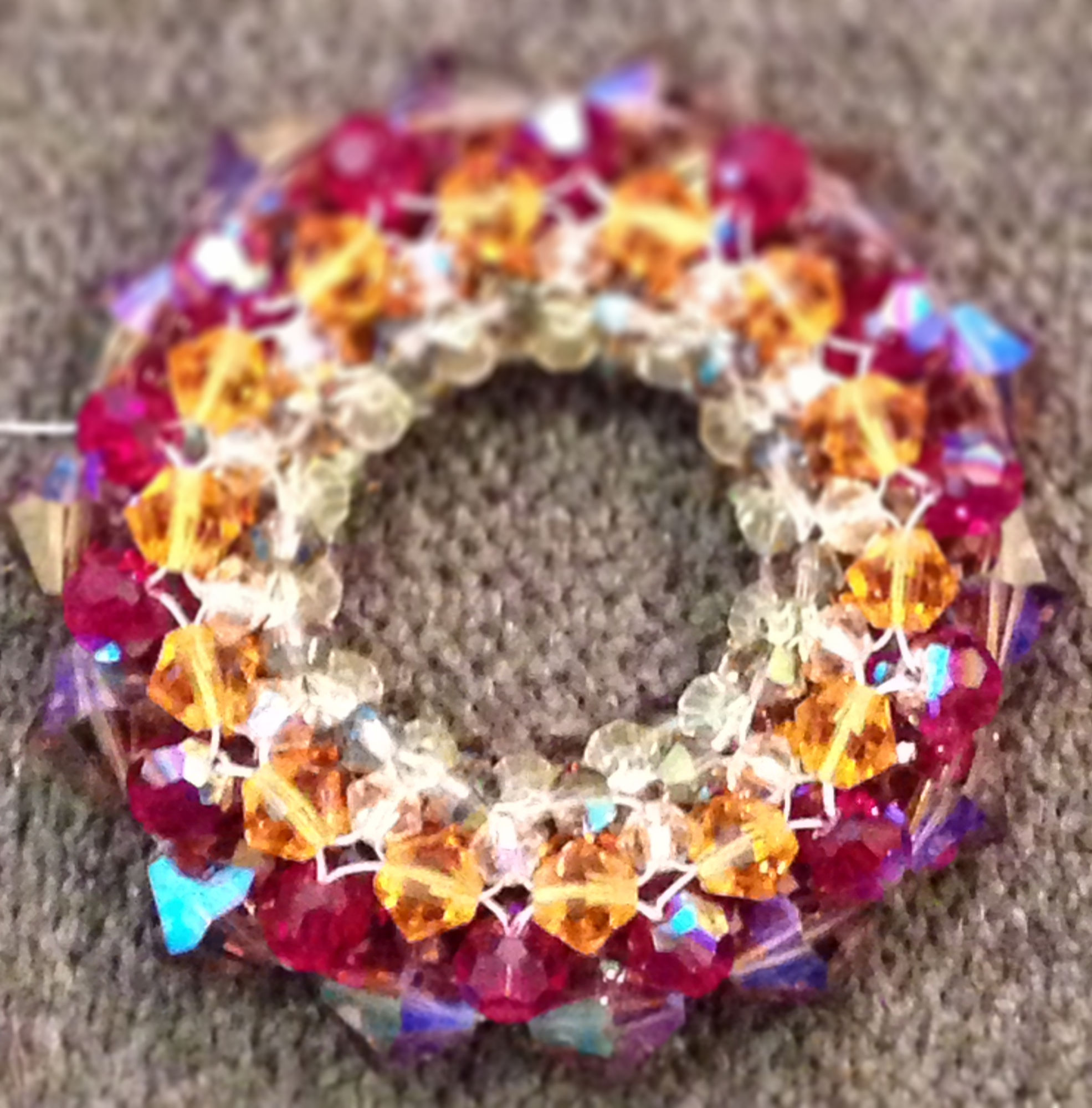 The initial right-angle ring, pictured at right, positively glowed! And the silvery beads, when placed in the netting, masked just enough of the crystal to add mystery and restraint to that riot of color. I couldn't believe I'd made such a pretty, eye-catching thing. It felt like I'd lucked into it.
The initial right-angle ring, pictured at right, positively glowed! And the silvery beads, when placed in the netting, masked just enough of the crystal to add mystery and restraint to that riot of color. I couldn't believe I'd made such a pretty, eye-catching thing. It felt like I'd lucked into it.
Success was not without consequences, however: the mystery would be lost if I tried to add the same netted neckstrap as before, because that particular pattern would leave the Swarovski open to the eyes rather than demurely veiled. What's more, I was concerned that netting wouldn't be a proper support for what was now a rather weighty beaded bead.
So instead of a netted rope, I went with a simple strip of right-angle weave in descending size order of crystals, with the same netting frame from the pendant.
How did it look, you ask?

Ta-da! Experiment: success. Cactopus Necklace demons: exorcized.
Roads Not Taken:
- If I were to try this again, I'd be tempted to switch the silvery beads to stone grey and add a lot of cobalt Swarovski. My stash was rather light on the blues, and I feel this design could go deeper.
- I wonder if this right-angle + netting technique can be used to bezel a rivoli or a cabochon? My rivoli stash is ever-growing and crying out to be played with.
- Speaking of -- I wonder if the Scheherezade Pendant itself could be made to wrap around a rivoli or fancy stone? THINK OF THE SPARKLIES.
- The neckstrap definitely has more pattern potential as well. I wonder if I can make something in the shape of a Gothic arch? Bead size would be absolutely crucial here.
- There's got to be a way to use round flat peyote and netting to build a little rose-window cocktail ring with leftover crystals. So far, no luck, but I'm going to keep trying.
- The finished necklace has a steely kind of strength to it -- very modern, despite the Gothic inspiration. What would happen if I added a few feminizing pearl embellishments for a more antique look?
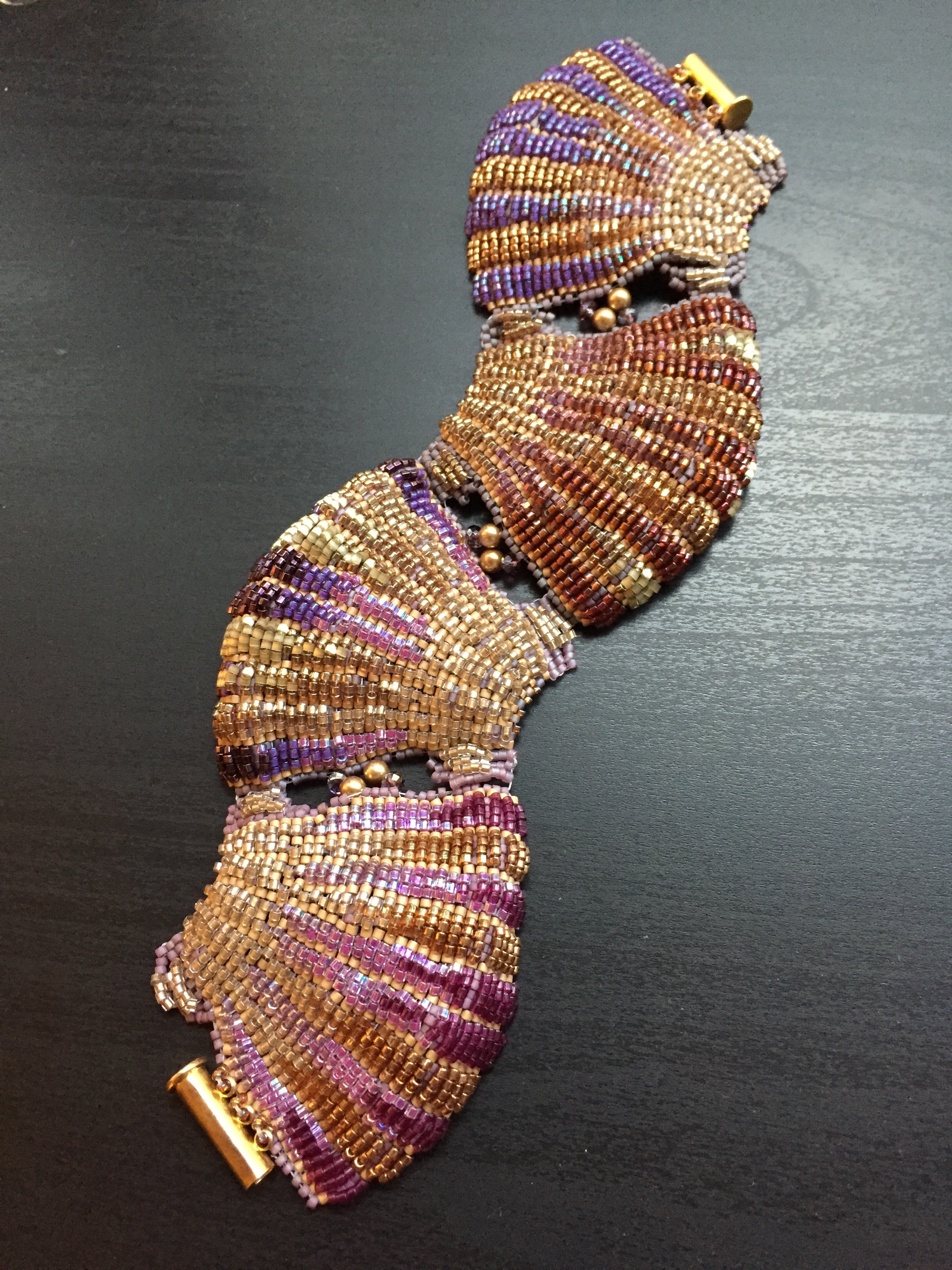 This bracelet was my entry in this year's Fire Mountain Gems and Beads contest, and can you believe it? I was a finalist! It's my third contest and my very first time finalling, so I am naturally a-burst with pride and ambition. The shells are pretty addictive to make, too, so you'll probably be seeing those in future.
This bracelet was my entry in this year's Fire Mountain Gems and Beads contest, and can you believe it? I was a finalist! It's my third contest and my very first time finalling, so I am naturally a-burst with pride and ambition. The shells are pretty addictive to make, too, so you'll probably be seeing those in future.


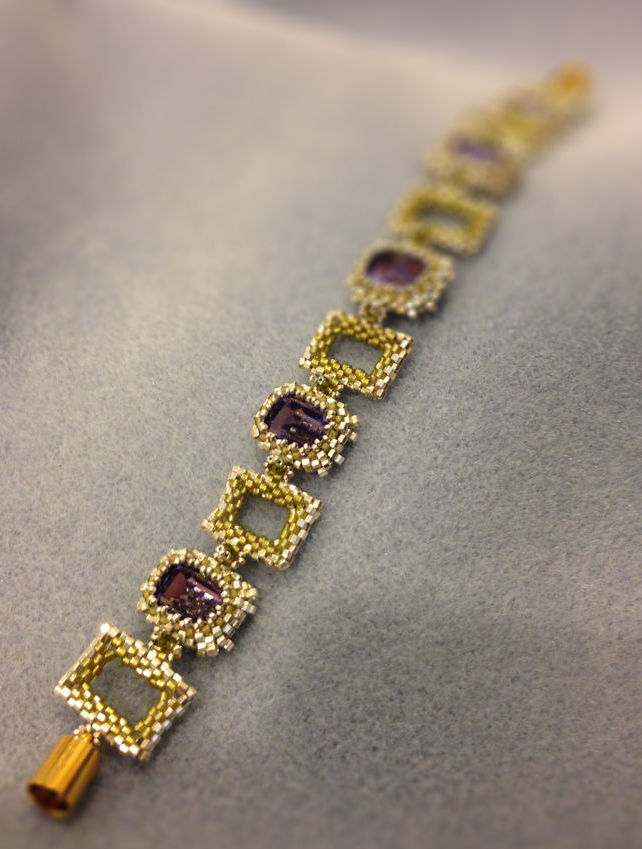
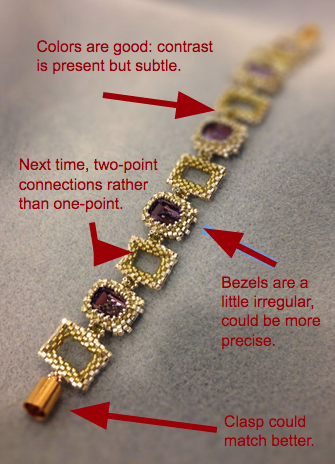
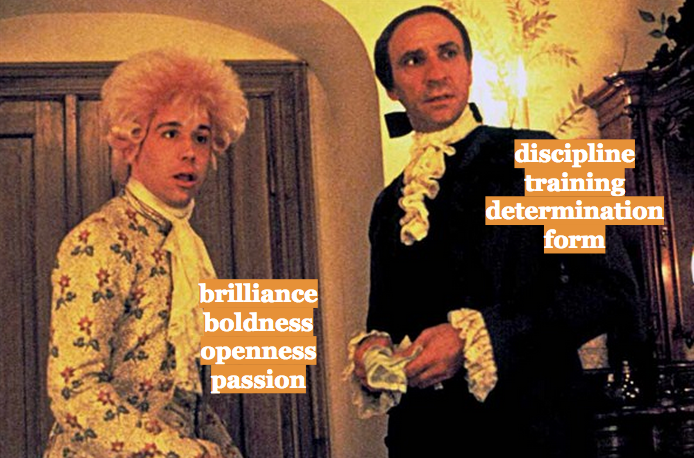

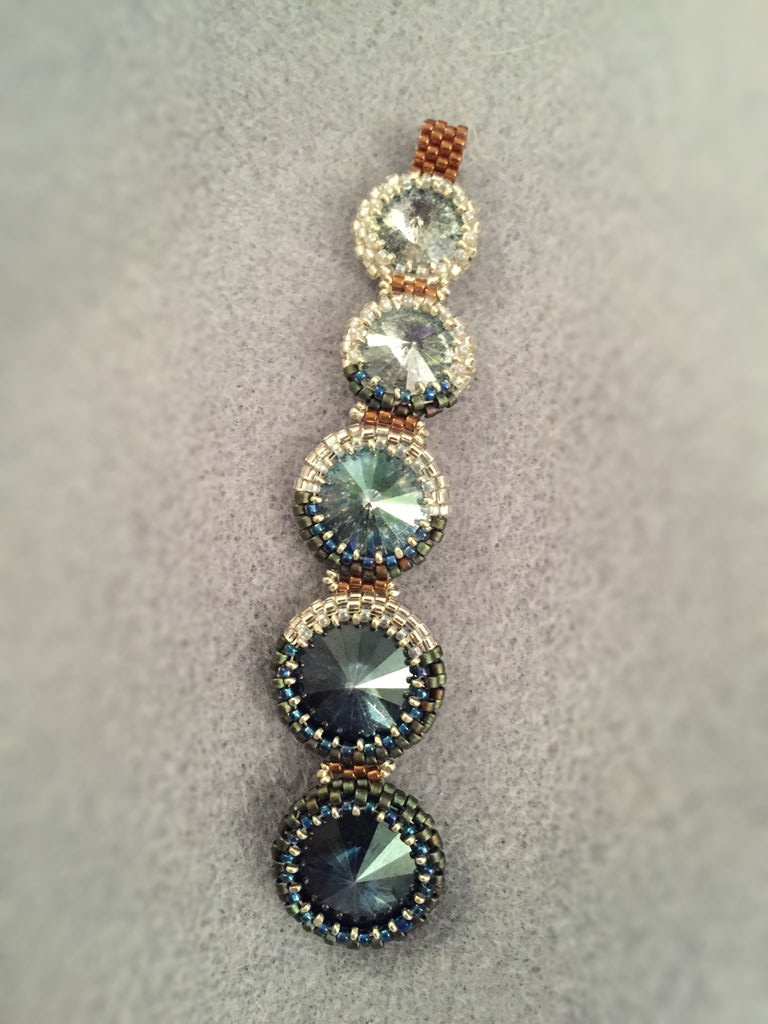

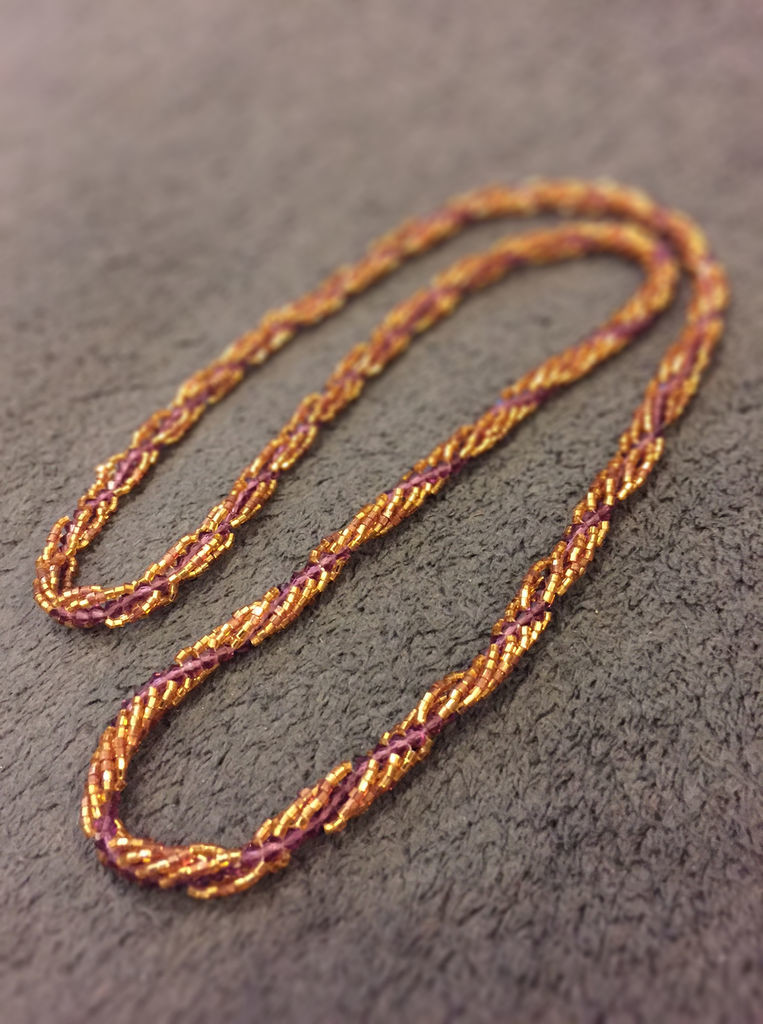
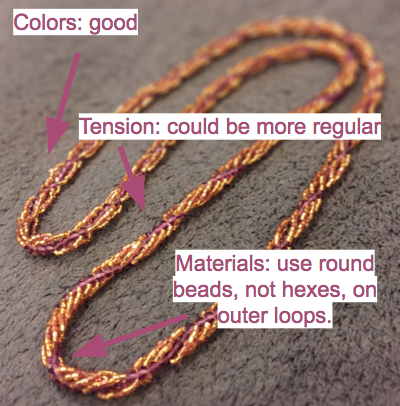
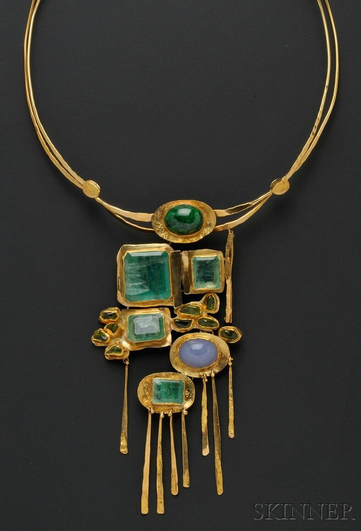

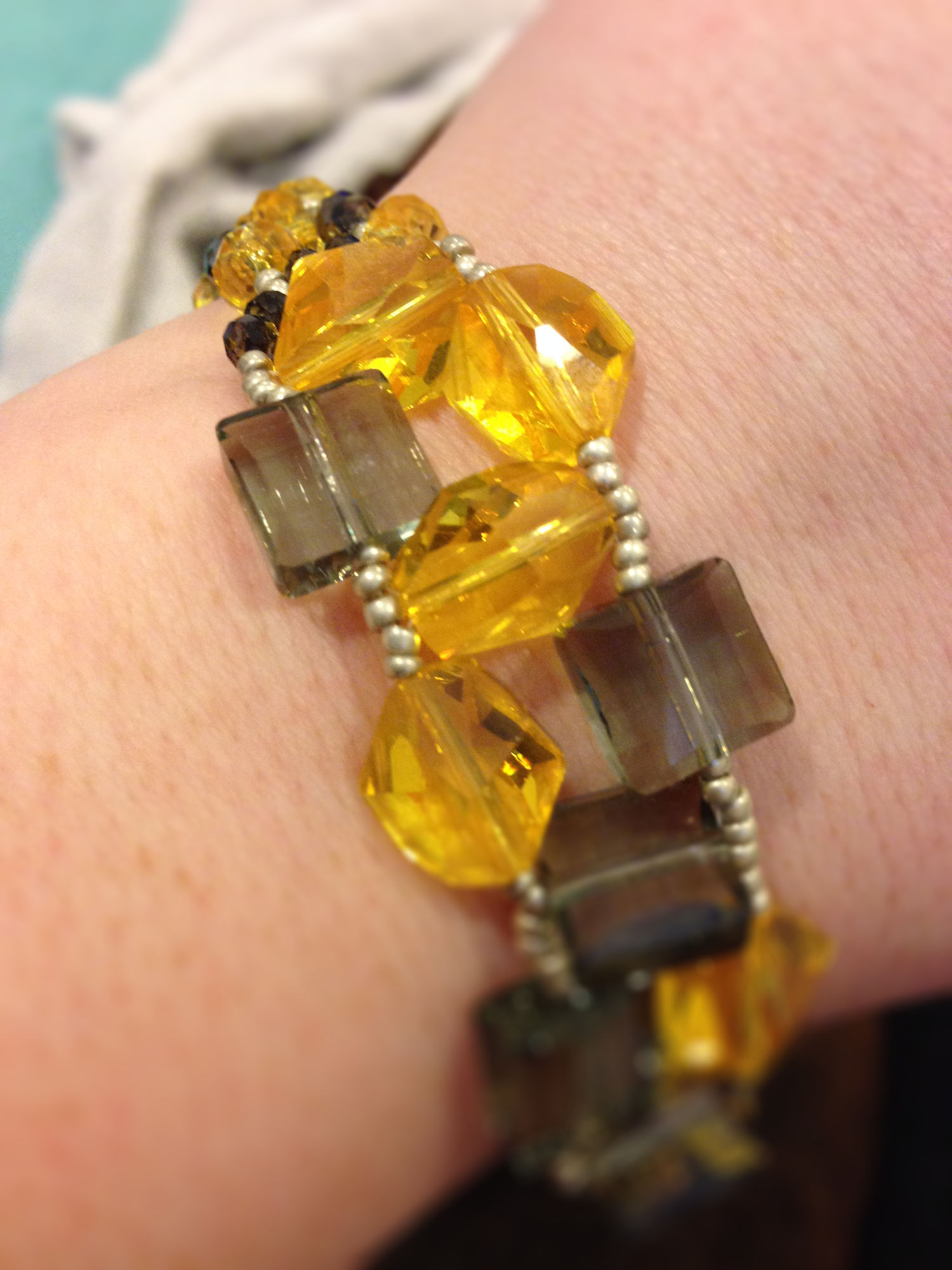


 The initial right-angle ring, pictured at right, positively glowed! And the silvery beads, when placed in the netting, masked just enough of the crystal to add mystery and restraint to that riot of color. I couldn't believe I'd made such a pretty, eye-catching thing. It felt like I'd lucked into it.
The initial right-angle ring, pictured at right, positively glowed! And the silvery beads, when placed in the netting, masked just enough of the crystal to add mystery and restraint to that riot of color. I couldn't believe I'd made such a pretty, eye-catching thing. It felt like I'd lucked into it.